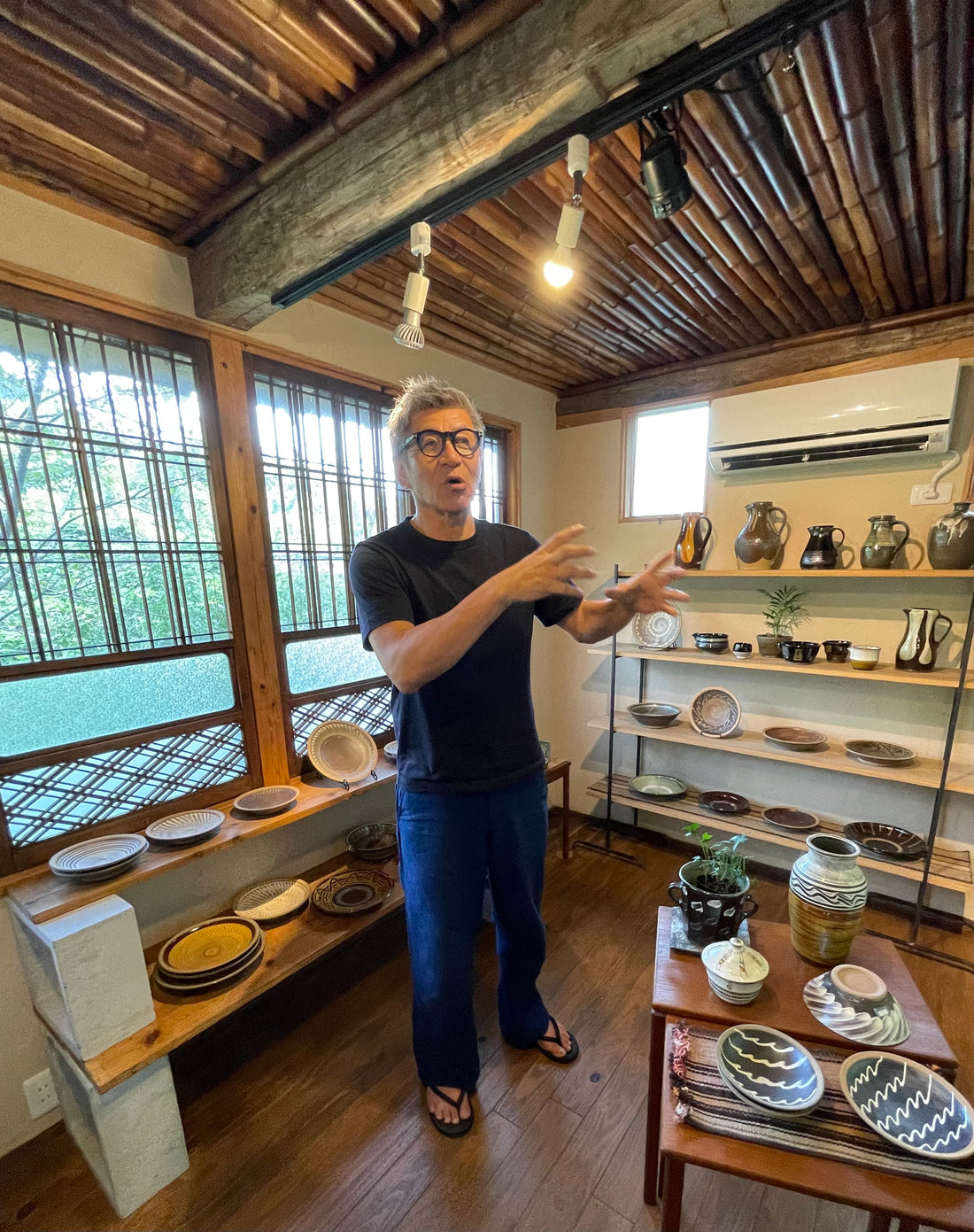In Hita City, Oita Prefecture, there is the 'Onta-yaki Pottery Village.' At the foot of the village lies 'Rokumeian,' a gallery specializing in Onta-yaki pottery. In recent years, it has quietly gained recognition as a stop for guests on JR Kyushu's luxury cruise train, the 'Seven Stars.' I had the opportunity to speak with the gallery owner, Tetsuya Sato.
What do you think is the appeal of the Onta-yaki Pottery Village?
"It seems that pottery enthusiasts visit Onta-yaki Pottery Village to experience the roots of folk crafts. Those visiting the village for the first time often describe a sense of nostalgia or feel as if they've stepped back in time. While listening to the sound of the 'karausu' (water-powered hammer), their senses become heightened, and they feel something quite mystical. Of course, there are also those who come to purchase pottery, but we often hear from travelers that walking around the village leaves them feeling refreshed both physically and mentally."
Why do you think the village has been able to endure for 300 years without change?
"In this small village, 13 households and 9 kilns reside. The forest surrounding the village provides clay and firewood, and a river flows through the center, powering the karausu (water-powered hammers). The village is self-sufficient, with all the materials needed to produce pottery, allowing them to continue making it even without electricity. Additionally, the strong family bonds and the wisdom of work and life passed down through generations have contributed to the village's longevity. Moreover, the lack of unnecessary external information has been beneficial. However, Yanagi Sōetsu and Bernard Leach were exceptions, and by adhering to their teachings, the village has avoided the pull of mass production and commercialism. I believe that this is what continues to enhance the appeal of Onta-yaki pottery today."
How have overseas customers responded?
"Before COVID-19, most of our visitors came from Europe and Australia, but recently, we've seen an increase in visitors from Korea, China, Taiwan, the U.S., and Southeast Asia. While many are already passionate about pottery, we also get creators and designers who come out of a more casual interest. Recently, we’ve been holding exhibitions by Rokumeian in Tokyo and Kyoto, where Onta-yaki is appreciated for its natural, close-to-nature aesthetic and its versatility in everyday use. The pottery complements any cuisine, which is highly valued. There's a growing awareness that a dish is only complete when food is served on these pieces."
What was your reason for starting Rokumeian?
"I opened the gallery 12 years ago. This place originally belonged to my family and holds many memories for me. I was born and raised here, and I’ve had relationships with the pottery families since I was a child. My father was a calligrapher who would write inscriptions on the wooden boxes that held the pottery, and my mother was a bamboo craftsman, making items like brush holders. This thatched-roof farmhouse is over 150 years old, and while its upkeep is challenging, I opened this shop here to share the beauty of Onta-yaki and the richness of traditional Japanese culture."
What’s next for the gallery?
"Recently, we've been collaborating with interior shops in Tokyo, designing items such as plates, pitchers, and vases, and requesting the kilns to produce them. We are also planning to create larger, more impactful pieces. I believe that Onta-yaki pottery can harmonize with the furnishings in homes and hotels abroad, bringing out a subtle balance. This year, I’ve had several overseas trips to places like the U.S. and Taiwan, and I’m looking forward to Onta-yaki gaining even more recognition, with more people visiting the village in the future."




